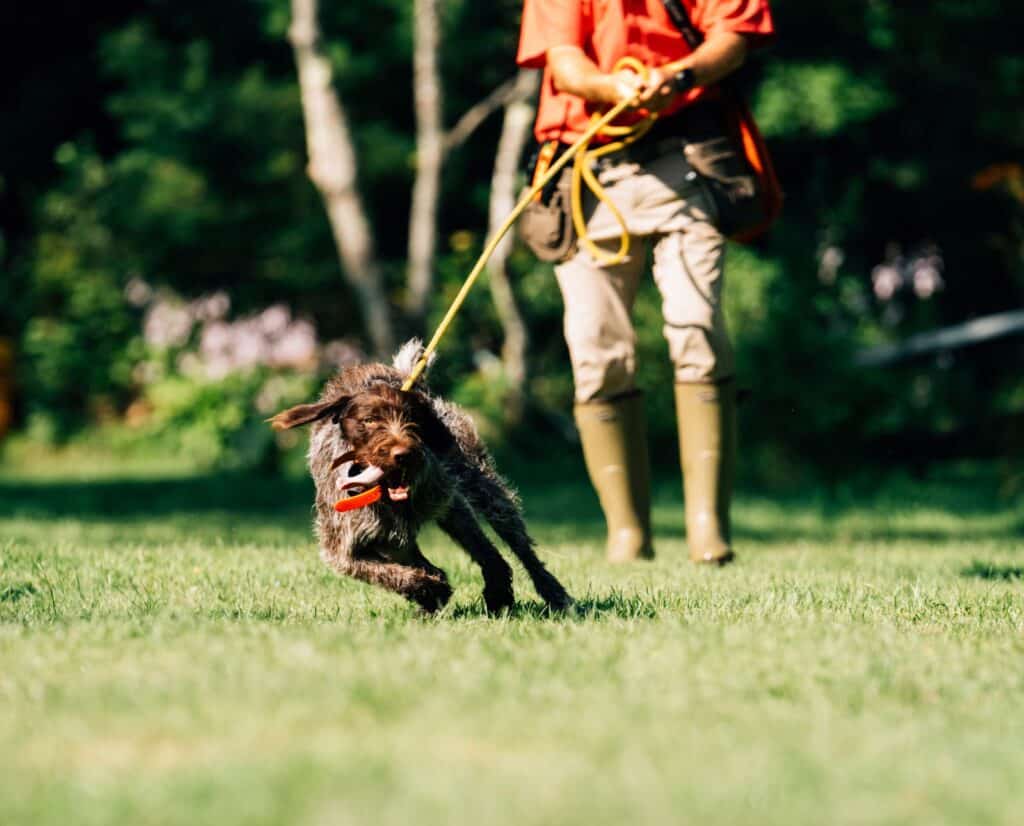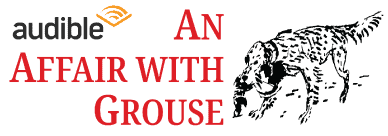Home » Hunting Dogs » Training Dogs with a Long Lead – Check Cord Basics
Training Dogs with a Long Lead – Check Cord Basics

Jason Carter is a NAVHDA judge, NADKC member, director of…
Teach obedience and steadiness while preventing common off-lead problems
Dog training methodologies are vast. The long lead’s outward appearance may seem like a relic from training days gone by. And truth be told, for some, that may be true. With the rise of e-collars and modern training based on classical and operant conditioning, many handlers have eliminated long leads from their routines entirely.
But I’d argue that the long lead remains a foundational tool in bird dog development—especially for newer trainers. It improves your timing, develops handler focus, and builds a connection with your dog that no e-collar ever could. It also helps reduce the risk of overcorrection, a common pitfall when handlers jump into remote training too quickly.
In this article, we’ll cover the practical basics of long lead training, enriched with some deeper lessons learned over decades in the field.
Why Use a Long Lead?
A long lead, or check cord, is a traditional tool used to establish control at a distance while helping dogs learn off-lead behavior through tangible, real-time feedback. It’s especially helpful for building obedience, steadiness around birds, and the transition toward reliable e-collar work.
The long lead creates structure and boundaries during a dog’s developmental phase. It helps prevent bad habits like “catch me if you can” games and strengthens a handler’s timing and ability to read a dog. It lays the groundwork for collar conditioning and offers both positive reinforcement and light corrective control. As I often tell clients, “Good trainers fix problems, but great trainers never have them.” A long lead gives you the ability to prevent those problems before they form.

Choosing the Right Long Lead
Long leads come in many materials, lengths, and diameters. Choosing the right one depends on your dog’s age, size, and stage of training. Generally, the longer the lead, the harder it is to manage, but the more range it gives you. The material matters, too. Biothane leads are waterproof and durable, though they can stretch at the wrong moment. As Michael Neiduski of Ugly Dog Hunting notes, “The biggest issue is that Biothane versions of the long lead have a bit too much stretch in the worst moments, like when the dog is lunging for the bird.”
Personally, I prefer dense, rigid leads around 15 to 20 feet long for older dogs. They’re stiff enough to avoid tangling in cover but comfortable on the hands. For young pups, a short piece of paracord with a small clip can be perfect for introducing the sensation of a lead. I use it indoors and outdoors, teaching the pup to associate the lead with positive experiences like drills, birds, and treats. This early exposure creates a lasting impression that I am the leader.
Safety and Setup Considerations
Training with a long lead requires physical awareness. Gloves help prevent rope burn, and tall boots or socks protect your ankles from nylon burns. Always ensure the lead runs over the dog’s back, not under its legs, to avoid injury. Avoid knots or loops that can snag in cover, and constantly manage your line to prevent tangling.
For dogs that are flight risks, I recommend pairing the long lead with a GPS or beeper collar. If the dog gets entangled at a distance, you need to locate them quickly.
It’s also important to acknowledge the physical strain on the handler. Back, knee, or wrist injuries are common among experienced trainers. Using a training stake or whoa post can help reduce wear and tear while maintaining control.
Timing, Pressure, and Communication
The long lead serves as an extension of your short lead work. It helps you chain commands together, correct disobedience, and introduce steadiness without forcing early off-lead mistakes. At first, the long lead isn’t for commanding; it’s for helping the pup accept direction. Later, it allows you to layer pressure—a pop or snap—with commands the dog understands.
Learning occurs when the lead is slack. A pop should feel like a tap on the shoulder, reminding the dog of what it’s already learned. Avoid constant tension, which inhibits learning and can telegraph corrections. If your dog senses you tightening the line before it smells a bird, it may start associating tension with birds and miss the opportunity to point naturally.
Think of handling a long lead like fly fishing. You mend the line, adjust for current, and watch for the twitch. A well-timed correction communicates volumes. A light pop might say, “pay attention,” while a firm snap may say, “that’s not okay.”

Reading the Wind and the Dog
Wind direction plays a critical role in long lead training. If you’re teaching pointing, cast the dog so it crosses the scent cone at a distance. To train steady to flush, keep the dog upwind of the bird. For tracking drills, downwind positioning is ideal.
Every dog behaves differently when it encounters scent. Through the long lead, you can feel your dog’s body language—the shift in posture, tail movement, ear flicks—and intervene at just the right moment. This is the subtle art of timing that separates good handlers from great ones.
Transitioning to the E-Collar
Eventually, most dogs need e-collar conditioning for safety and reliability in the field. But without the foundation built by the long lead, the e-collar can confuse the dog or cause it to associate birds with punishment. A well-trained dog understands what’s being asked before a correction ever comes. The long lead builds that understanding.
As my father, Blaine Carter of Merrymeeting Kennels, once taught me: “The long lead teaches lessons with clarity and fairness. The e-collar enforces those lessons at a distance. If you don’t have the first part right, the second part won’t work.”
The Art and Value of Long Lead Training
Long lead handling remains one of the most effective and time-tested methods for developing obedience, timing, and trust in bird dog training. It builds the relationship between handler and dog while offering a clear path toward off-lead reliability.
When used with patience and intention, the long lead helps shape behavior, provides real-time communication, and reduces the need for unnecessary correction later on. It allows you to guide the dog with fairness and clarity, laying the foundation for success in the field.
Before reaching for your e-collar, reach for the long lead.
Jason Carter is a NAVHDA judge, NADKC member, director of youth development, secretary of NAVHDA’s youth committee, clinic leader and trainer at Merrymeeting Kennels. He has been around versatile hunting dogs his entire life, literally! Born into the Carter family and Merrymeeting Kennels, he attended his first NAVHDA test in Bowdoinham, Maine, when he was just a year of age. Jason successfully trains, tests and breeds Deutsch Kurzhaars in both the NAVHDA and NADKC testing systems. Through his work at the kennel, Jason has had the opportunity to develop pointers, flushers and retrievers over the years. When October arrives he can be found with family and friends hunting throughout New England.




Totally agree. Fast hands and anticipating the dogs action. A long lead is hands on and done correctly leads to a better gelling of the handler and the dog.